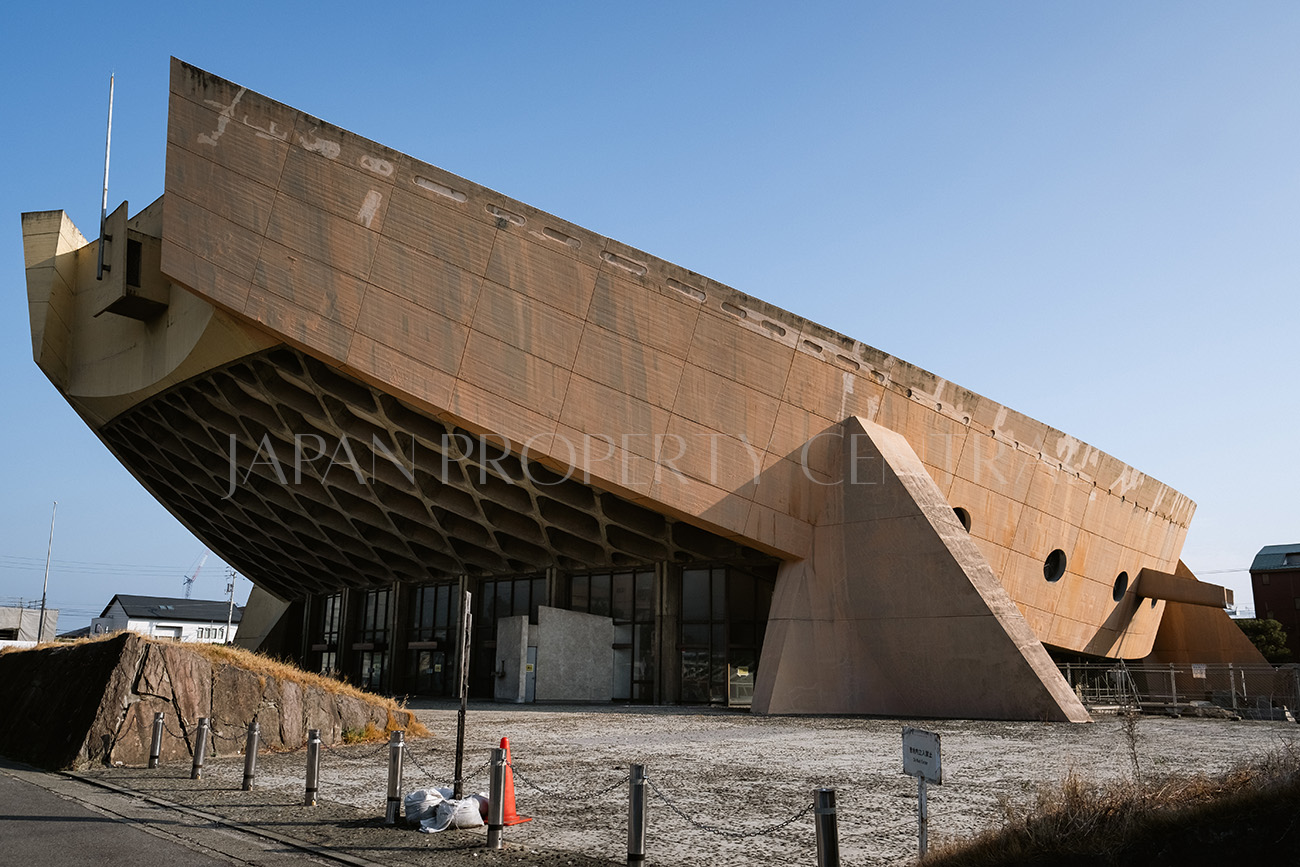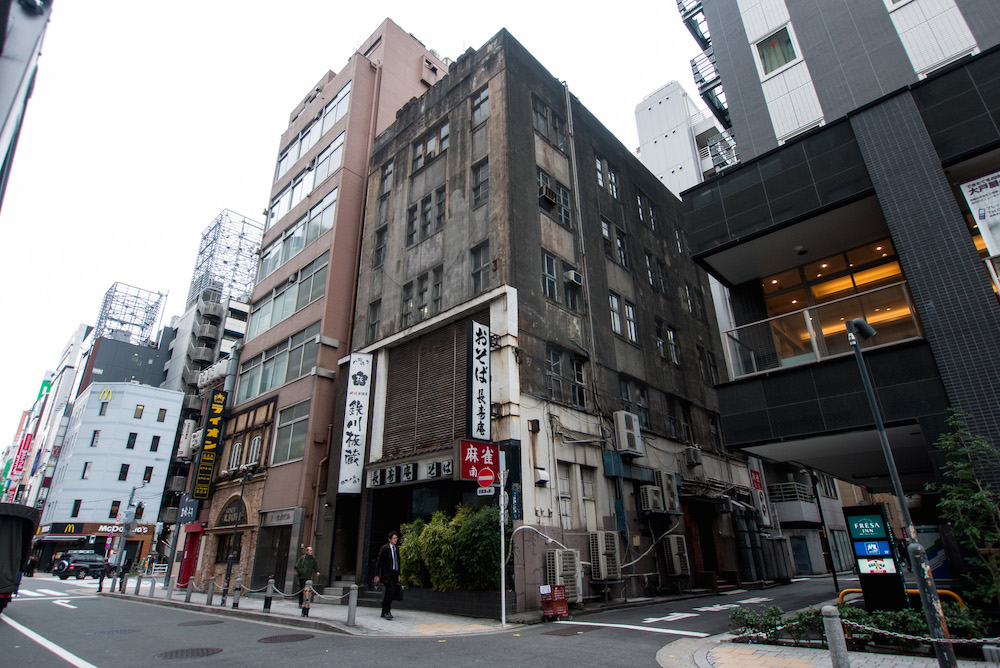Kenzo Tange-designed gymnasium in Kagawa at risk of demolition
 The Kagawa Prefectural Gymnasium in Takamatsu City faces possible demolition after the sports facility was closed to public at the end of September. The brutalist building was designed by famed architect Kenzo Tange (1913 ~ 2005) and completed in 1964 - the same year that the Yoyogi National Gymnasium, another design by Tange, was built.
The Kagawa Prefectural Gymnasium in Takamatsu City faces possible demolition after the sports facility was closed to public at the end of September. The brutalist building was designed by famed architect Kenzo Tange (1913 ~ 2005) and completed in 1964 - the same year that the Yoyogi National Gymnasium, another design by Tange, was built.
The 3-storey building has an arena with 1,300 fixed seats, a gym and conference rooms.Read more
Development near Sengaku-ji Temple draws opposition
 A proposal for an 8-storey apartment building next to the entrance to the historic Sengaku-ji Temple in Minato-ku has drawn criticism and opposition from residents due to the potential impact it will have on the landscape and character of the area.
A proposal for an 8-storey apartment building next to the entrance to the historic Sengaku-ji Temple in Minato-ku has drawn criticism and opposition from residents due to the potential impact it will have on the landscape and character of the area.
The site in question is located next to the temple’s Chu-mon gate. A 3-storey house is being demolished to make way for a 23m tall 8-storey apartment building which will contain mostly studio apartments. The land had been purchased by a Minato-ku based developer and construction is scheduled to start in mid-September.
Shimbashi to lose one of its oldest buildings

Shimbashi is about to lose one of its oldest buildings as the 94-year old Tsutsumi Daiichi Building is about to be torn down to make way for redevelopment.
Built in 1920, the five storey building was designed by Yunosuke Sakai and built by Toyo Concrete Kogyo. It is an early example of reinforced-concrete construction and possibly the oldest existing multi-tenant concrete building in Tokyo. Japan's first all-concrete building - the Yokohama Mitsui Bussan Building - was built just 9 years earlier in Yokohama. Sakai had assisted Oto Endo with the design of the Yokohama building.Read more
Warou Flat - Azabu’s oldest rental apartments

Just a short walk from the bustling Azabu/Roppongi area there exists several pre-war apartments. Warou Flat is a small group of western-style rental apartments built between 1930 ~ 1937. There were originally five buildings, but only three remain. The buildings have been carefully maintained over the last 77 years and have so far managed to escape redevelopment. Read more
Seiko to sell historical residence in Shirokane for an estimated 30 billion Yen

On August 12, Seiko Holdings announced that they will be selling the 81-year old residence of company founder Kintaro Hattori in Shirokane 2 Chome and are expected to post a gain of 8.5 billion Yen (82 million USD) from its sale. Managing Director Akio Naito said the property was of historical importance to the company and they will announce further details after the property is transferred at the end of September.
The residence was designed by architect Teitaro Takahashi (1892 - 1970) and built by Obayashi Corporation in 1933. Takahashi designed a number of residences, hotels and buildings including the Former Maeda Residence in Komaba Park (1928) and the Takashimaya Department Store in Nihonbashi (1933).
Hattori founded the Wako watch and jewellery shop in Ginza in 1881. The current Wako department store building in Ginza was built in 1932 as the K. Hattori Building and replaced Hattori's original store which had been demolished in 1921. Naturally, the clock atop the building is a Seiko.Read more
Ken Corp plans to demolish Yokohama’s oldest warehouse

A local outcry has erupted after it was discovered that Minato-ku based real estate and expat leasing company, Ken Corporation, is considering demolishing the 104-year old Former Mitsui Bussan Yokohama Warehouse in Nihonodori, Yokohama.
The warehouse is one of the earliest structures in Japan to incorporate reinforced concrete in the construction. Built in 1910, the building has three floors as well as a basement and a total floor area of 2,194 sqm. It was designed by Oto Endo (1866-1943), a pioneer in designing RC buildings. He also designed the neighbouring Mitsui Bussan Yokohama Office Building (c1911), the Yokohama No. 2 Joint Government Office Building (c1926) and the Yokohama Teisan Office Building (c1926). The Mitsui Bussan Yokohama Office Building was the first building in Japan to be completely built out of reinforced concrete.Read more
Owning a castle in Japan? A possibility or a pipe dream?

Europe is dotted with historic castles that can be bought and lived in, but what about Japan? Can you buy an authentic castle in Japan?
In short - probably not.Read more
